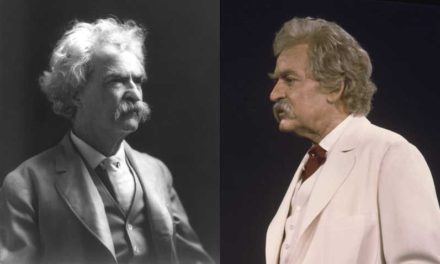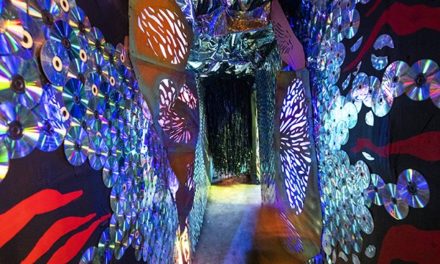From Atlantic Cities:
“You want a Victoria’s Secret storefront? Jackson, Mississippi, come on down! Wetzel Pretzel? We got a Wetzel Pretzel for ya. Where are you spending your recession, huh? At the Gap in Mississippi! It’s free!”
Thirty-year-old Josh Hailey is a few beers in, hamming it up for my benefit in a mock-announcer voice. He and a handful of his friends have just taken me out for a Mediterranean meal on a mild February night in the Jackson neighborhood of Fondren. They’re telling me about a recent block party held at the Metro Center, a strip mall whose abandoned lower half was inhabited by pop-up stores and temporary restaurants that past Sunday.
City officials “are offering all of the old stores to any artist that wants it,” adds Whitney Grant, 27. “So yeah, young people can make it here, because now they’re just giving away malls.”
Sandwiched between the music havens of New Orleans and Memphis, Jackson, Mississippi, isn’t exactly considered a magnet for ambitious young artists and college grads. But in the last few years, young people have been moving and returning to Fondren—a cheerful, gentrified part of Jackson that has welcomed artsy types for 15 years—as well as a post-industrial neighborhood a few blocks away called Midtown. On the surface, Midtown looks blighted, lined by railroad tracks and full of neglected warehouses and boarded-up homes with spray-painted white X’s, announcing their vacancies or foreclosures. But inside the buildings, twentysomethings have formed a tight-knit community that’s surprisingly diverse: natives and transplants, black and white, DJs and studio artists and filmmakers and urban planners.
Since the scene is so small and the cost of living is so low, the vibe is decidedly collaborative, not competitive.

Josh Hailey lives and works in this inexpensive studio space in Jackson’s Fondren neighborhood. (Aaron Cassara)
“Community is really big in Mississippi, and I think that helps the arts economy run smoother,” says Daniel Johnson, 32, who rented an entire warehouse in Midtown for $75 a month, a building with “high grass, no water, no electricity.” Johnson used it for a performance art piece for five months.
Hailey nods and adds: “When someone moves here, everyone reaches out—’Hey, do you want to be involved somewhere?'”
After dinner, Hailey takes me to the studio where he both lives and works. He spent the past year traveling across the country and working on a photo project called Photamerica. His home base is a spacious, rough-around-the-edges studio in a Midtown warehouse shared by a handful of other artists. He pays $250 a month for around 600 square feet. When he was living in Jackson full-time, he was making rent taking pictures for the Mississippi Development Authority. Now he’s picking up odd jobs.
Hailey hands me a Miller High Life and we take a walk around the neighborhood. (He assures me this happens every night—these artists and community activists float between each other’s studios until the wee hours, openly carrying their beverage of choice.) A few blocks away, a group of DJs and musicians have transformed the former Bell South building into rehearsal space and recording studios. Twenty-nine-year-old Philip Rollins, aka DJ Young Venom, keeps his turntables and thousands of records in a giant room with linoleum floors and fluorescent light, at a cost of $175 a month. He’s planning on opening a boutique that sells designer toys, rare records, and graphic novels with the help of a redevelopment grant from the city.

Phillip Rollins, left, and Greg Gandy have found a home in Jackson’s emerging arts community. (Aaron Cassara)
“You go to New Orleans, and there are a million people doing the exact same thing you’re doing,” says Rollins. “The artists here have a drive like no other, because we have to make something out of literally nothing.”
Jackson’s arts scene is racially and socioeconomically diverse. Some, like Rollins and Johnson, have children to support. Some went to fancy colleges—Lauren Cioffi, a 25-year-old L.A. transplant who, at the time of my visit, was completing a documentary film called subSIPPI, graduated from Georgetown University—and some left college or never went in the first place. Greg Gandy, 23, who was also working on subSIPPI, dropped out of the University of Southern Mississippi because he realized “he could stay and graduate one more year, or I could come to Midtown and make that $10,000 last for two and a half years.” It has.
Not everyone who’s part of this scene is an artist. After a six-month period of unemployment (made relatively painless with savings and cheap rent) Grant got a job at Midtown Partners with the title of Creative Economies Coordinator. She’s in charge of bolstering Jackson’s creative economy, making sure artists and entrepreneurs have access to buildings and can expand their businesses. Grant and her friends are blunt about the fact that there aren’t a lot of “real” jobs or industry. (“If you’re lookin’ for a 9-to-5, don’t come here,” Hailey says.) People make ends meet with restaurant jobs or a self-sustaining system of odd gigs.
“If your friend owns a building, she’d pay you to come paint a door,” Grant says. “We just all help each other out.” Being part of a small community means “the people who are moving and shaking the town are the people that you know and have access to.”
That includes people in local government. At the time of my visit, Melvin Priester, a 34-year-old Jackson native, had just left his corporate lawyer job in San Francisco to run for city council (a few months afterwards, he won). He’s a few years older than these artists, but he’s explicitly looking out for them. Priester is focusing on getting young people to move back to the Deep South by making the city habitable for them—improving the schools and supporting artists trying to revitalize communities.
“You had this perfect storm where the recession was causing people to come back,” he says. “I wanted to capitalize on that. You have the real successes when prices are low and things are being shaken up.”
Like most of the people I met, Priester sees Jackson as an underrated city with a distinct character, a perfect place for a young person who feels lost in the crowd elsewhere. “When subSIPPI went on Kickstarter, people gave money and people cared,” says Priester. “People don’t care about the 30th project about San Francisco.”





